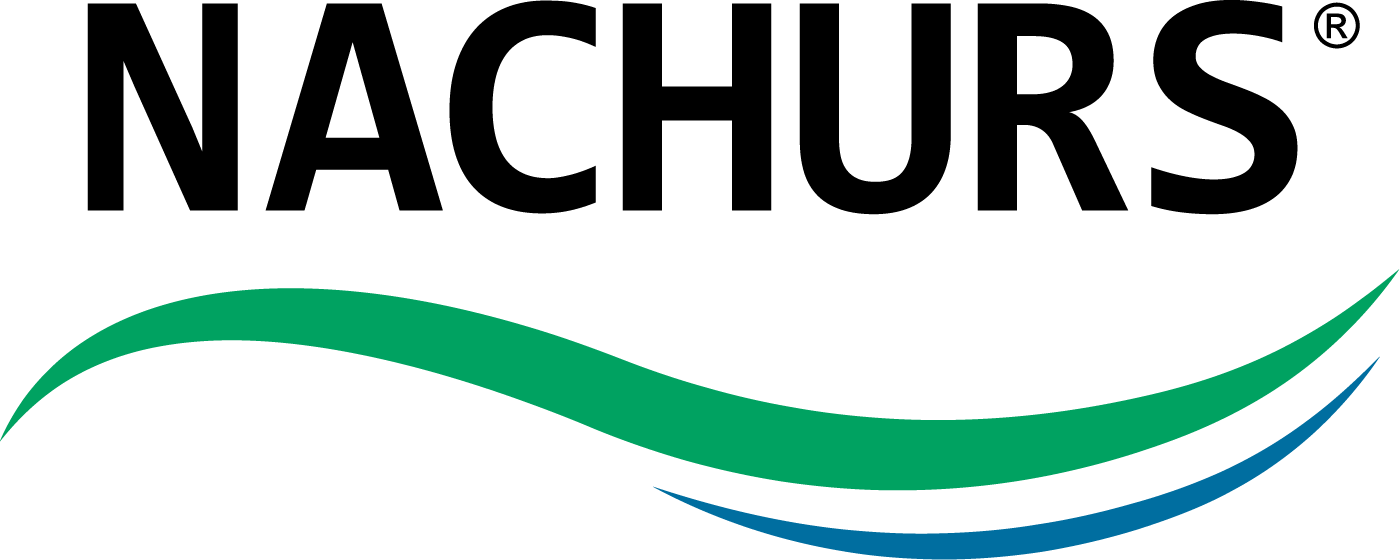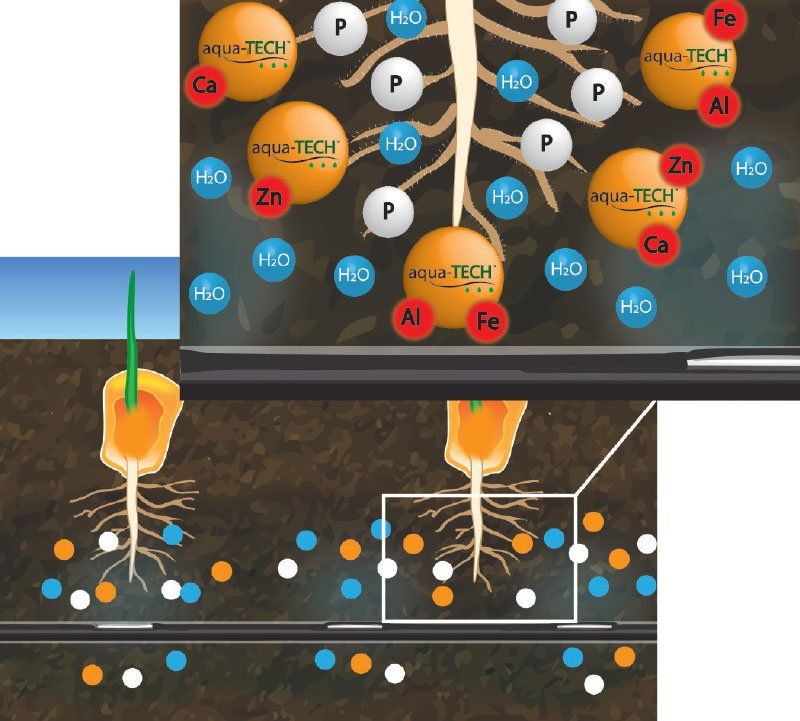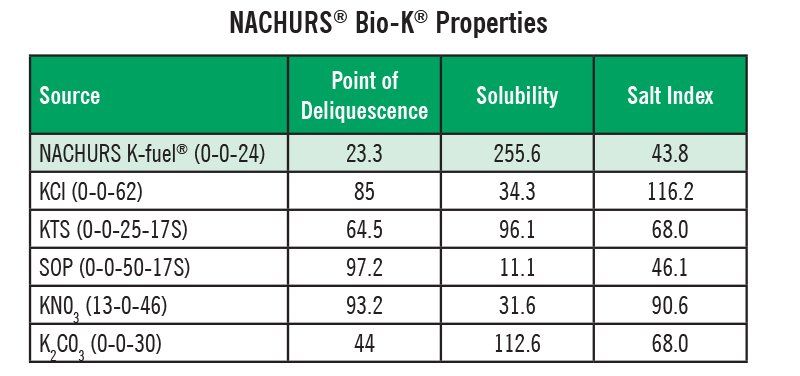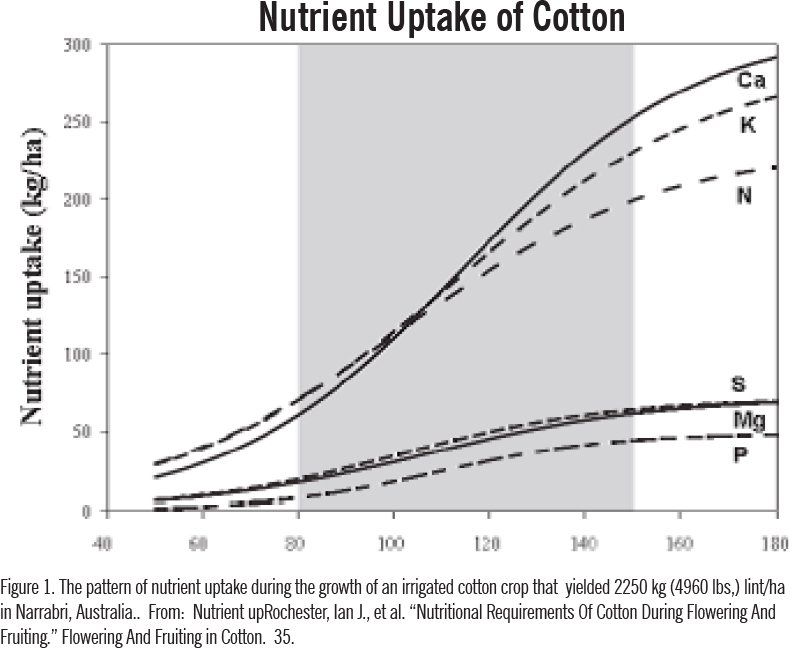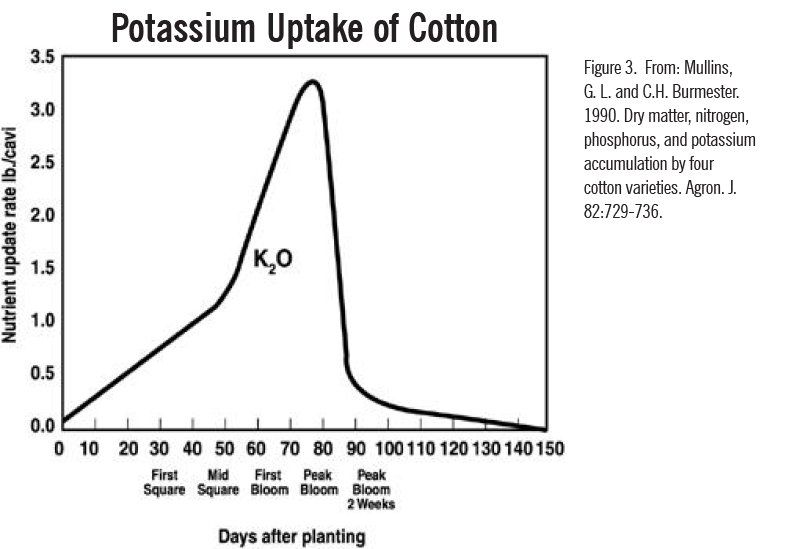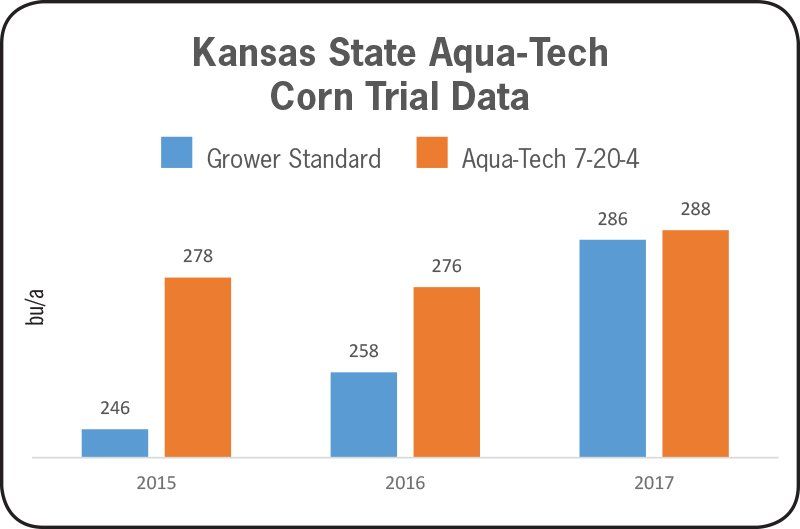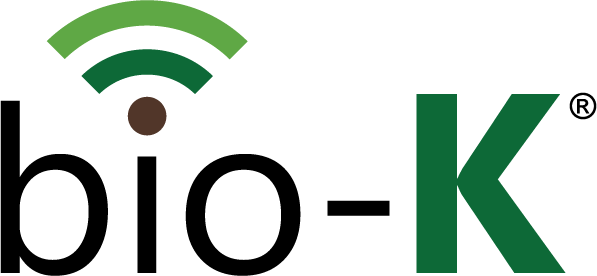Fertigate with Confidence®
with NACHURS® Aqua-Tech®
NACHURS Aqua-Tech is a unique polyamine technology that allows for greater plant productivity through fertigation systems, delivering highly available low-salt nutrients safely and precisely. Offering much flexibility, Aqua-Tech products can be used in-furrow and foliar on a variety of crops. Aqua-Tech contains NACHURS Bio-K ®: technology which ultimately leads to better plant establishment, more vigorous growth, and higher yields.

Features
- Contains a polyamine technology
- High concentration of soluble nutrients
- Low-salt nutrient solution
- Optimal pH
- High nutrient availability
- Contains NACHURS Bio-K technology
Benefits
- Ability to fertigate phosphate effectively
- Low scale formation for less frequent acid flushing
- Increased phosphorus fertilization efficiency due to avoidance of binding caused by cations such as calcium or magnesium
- Lower use rates for precision application and timing
- Improved soil health
- Improved product safety
- Handler: safe pH range
- Crop: low salt
- Equipment: non-corrosive
The Technology
NACHURS Aqua-Tech is unsurpassed in preventing hard water tie-up which leads to scale formation and nutrient unavailability. Aqua-Tech delivers highly available low-salt nutrients safely and precisely in conjunction with a unique polyamine technology that works to eliminate phosphorus tie-up in most cases.

NACHURS Bio-K technology is also included in the NACHURS Aqua-Tech products. Bio-K is a premium source of potassium fertilizer combined with a natural plant metabolite; the most effective and efficient source of potassium. Using Bio-K technology results in quicker germination, improved root development, and an elevated abiotic stress tolerance; leading to better plant establishment, more vigorous growth, and higher yields.
NACHURS Aqua-Tech 7-20-4 contains both unique potassium and phosphorus chemistry. Aqua-Tech chemistry is a patented process and refers to a polyamine molecule with proprietary additives and compatibility agents which helps protect phosphorus against adverse interaction with metals (calcium, iron, aluminum, etc.) and bicarbonates which may be contained in irrigation water sources. Products selected for this line have unsurpassed nutrient solubility and plant availability.
Patented polyamine technology occupies the cations to prevent them from binding to plant available phosphate.
- Reduces the occurrence of precipitates which plug emitters.
- Increases plant nutrient uptake by avoiding phosphorus binding with Ca++, or Mg++ which causes it to become insoluble and unavailable.
Aqua-Tech is the most soluble fertigation fertilizer available, ensuring nutrients will be available to the plants and not precipitate from solution.
- Protects contained phosphorus against adverse interaction with metals and bicarbonates.
- Phosphorus supplied by Aqua-Tech® is supplied in the orthophosphate form.
- Aqua-Tech has a greater concentration of nutrients than many other options.
- The pH of Aqua-Tech 7-20-4 is 5.8 making it safe to handle and especially suited for plant uptake.
- Aqua-Tech contains proprietary additives and compatibility agents.
- Aqua-Tech contains NACHURS Bio-K which has a lower molecular weight, lower salt content, and greater solubility.
The source of each nutrient selected to be included in Aqua-Tech is what makes this technology so unique.
The Science
- Nitrogen – Because nitrogen is highly mobile, it is often the most commonly applied nutrient. Nitrogen is an integral component of proteins, which are essential for healthy crop growth and development. Nitrogen is also needed to create the chlorophyll required for photosynthesis.
- Nitrogen deficiencies may cause stunted, spindly plants, low protein content fewer leaves, higher susceptibility to stress from weather, pests, and diseases.
- In cotton, excessive nitrogen can create rank growth, reduce yields and quality, delay maturity, increase disease, insects, and boll shedding, and pollute ground and surface water resources.
- The most efficient use of nitrogen fertilizer is achieved by applying the correct rate at a time when nitrogen loss will be minimal.
- Phosphorus – Adequate phosphorus is essential for seedling vigor, drought stress, and seed development. Phosphorus is essential for vigorous root and shoot growth, speeds maturity, helps overcome the effects of compaction, increases water use efficiency, and is necessary for energy storage and transfer in plants.
- During rapid growth, corn takes up over 30% of its annual needs, by silk it accumulates close to 70%, with the remainder being taken in during grain fill.
- When cotton reaches first flower it has accumulated 20% of its annual needs, by peak bloom 50%, and by first open boll the crophas taken up over 70% of its needs. Peak daily uptake of phosphorus occurs 60 to 100 days after planting. Phosphorus uptake through the cotton root is completed by the time the crop reaches the 50% open boll stage.
- Potassium – Essential for the growth and development of the all plants, potassium suppresses the incidence and severity of disease, increases water efficiency, and affects the speed of almost all plant biological systems.
- Nutrient uptake rates reach maximum during midbloom and then decline rapidly as bolls mature (Figure 3).
- Potassium affects fiber properties such as micronair, length, and strength.
- While corn is in rapid growth it takes up over 50% of its annual needs, by silk it accumulates more than 80%, with almost no potassium being absorbed through the root system after pollination (Figure 4).
- Secondary and Micronutrients – Secondary nutrients include boron (B), zinc (Zn), and sulfur (S). They are essential for plant growth and health.
- Sulfur is essential for the production of three amino acids, which are the building blocks in the synthesis of proteins.
- Micronutrients such as Boron (B), Molybdenum (Mo), Zinc (Zn), Iron (Fe), Manganese (Mn), Copper (Cu) and Chlorine (Cl) can be critical. Plants can suffer from a deficiency or an excess of any of these nutrients. Their availability is influenced by soil pH. Higher pH soils generally are lower in availability of all of these nutrients, except for molybdenum.
- Maximum uptake of secondary and micronutrients vary, but the patterns of accumulation are similar for most nutrients with the timing of peak uptake generally occurring during flowering.
- Corn and cotton are two of the row crops most often being irrigated. Nutrient uptake patterns are depicted below:
-

Nutrient uptake is not to be confused with nutrient removal. Removal refers to the nutrients which are actually harvested and removed from the field. Many nutrients are recycled in place, never leaving the field.
Our Products
Learn more about the specific Aqua-Tech products that will fit your fertility needs.
List of Services
-
Aqua-Tech 7-20-4List Item 1
Powered by NACHURS Bio-K technology, NACHURS Aqua-Tech 7-20-4 is a unique polyamine technology offering greater plant productivity through fertigation systems. A very flexible product, Aqua-Tech 7-20-4 can also be used in-furrow and foliar. This product delivers highly available low-salt nutrients safely and precisely.
-
Aqua-Tech 2-0-20List Item 2
Powered by NACHURS Bio-K technology, NACHURS Aqua-Tech 2-0-20 allows for more sulfur to be supplied per acre and also contains slow release nitrogen and micronutrients. This product delivers highly available low-salt nutrients safely and precisely.

